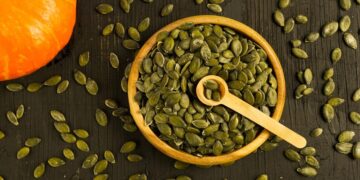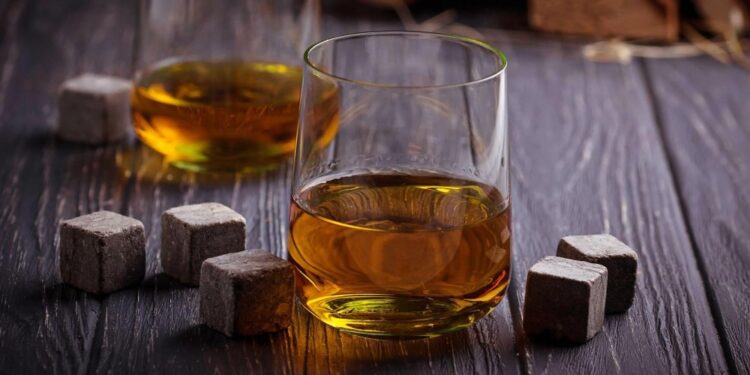There are so many bourbon or whiskey brands out there; it’s difficult to know where to begin. Knowing the difference between significant types of whiskeys is essential for making perfect alcoholic drinks and cocktails. So, if you’ve never tried any of these spirits before, this article is for you. First, let’s start with the basics.
1. Irish whiskey
Irish whiskey is among the most famous and widely available varieties of whiskey in the world. It is actually whiskey manufactured on the beautiful emerald isle of Ireland, where distilling the grains and then fermenting them into alcohol takes about five years. Irish whiskey can be very distinguished by its taste, aroma, and color. It has a mellow flavor which goes well with many types of drinks.
For example, if you are looking for a cocktail mixer, Irish whiskey will go great with a Manhattan mule; however, Irish Scotch will be a better choice if you want to drink just a simple bourbon or whiskey. Various stories surround the making of Irish whiskey. Some say it was created by accident, while others say it resulted from combining whiskey and gin. Regardless of the story, it is undeniable that Irish whiskey is a favorite among people worldwide.
2. Scotch whisky
Scotch whisky is a term commonly used to refer to any type of distilled beverage produced in Scotland. It is one of the sweetest alcoholic drinks and is very popular and versatile. Scotch whisky is very similar in taste to gin which is not quite as popular. Both have grown in fame throughout the world over the years, but Scotch bourbon and whisky brands have become increasingly valuable due to their growing popularity. There are many different kinds of Scotch whisky, and though there is much overlap in terms of the flavor, they can still be separated into three categories:
- High-quality single malt Scotch whiskey: It is usually a blend of Scotch grains, and the term “high quality” describes that the flavor is more prominent and fuller than that of low-quality Scotch. The highest quality is usually labeled “ultra-pure”, characterized by a clean, sophisticated taste like the Balvenie.
- Low-quality single malt Scotch whiskey: These are generally made from a lower grade of grains like oats, malt, or rice, and these lower-quality whiskies lack the rich, full taste of their higher-quality siblings. Many younger Scotch drinkers prefer these lower-quality whiskies for their smooth, mellow taste.
- Middle-finishing Scotch whiskey: The third category is the least common middle-quality or middle-finishing whiskies, which are made from a combination of different grains such as oats, barley, and flax. They are popular among amateur drinkers.
3. Japanese whisky
Japanese whisky is a particular style of distilled and aged spirit made and produced within the country. Japanese whisky differs from its global counterparts by incorporating rice or wheat in its malting process. It is said that this change accounts for the characteristically creamy and fruity flavor of many Japanese whiskies, particularly those that are blended and priced more reasonably. Japanese mashup also usually involves combining different grains, such as barley, buckwheat, and oats, and many Japanese blends also contain wheat and rye.
The typical Japanese whisky is relatively young, although older varieties are also available. The aging process is usually at lower temperatures in smaller used whiskey barrels made of lighter wood to enhance the mellow flavor of the whisky. Japanese whiskies are generally not served in glasses; instead, they are served in delicate blue or green cups. Of course, as in Japan, an essential ingredient for any Japanese whisky is the carefully chosen oak whiskey barrels in which it is aged to make them worth drinking and to share with friends and family.
4. Canadian whisky
Canadian whisky is made from grains distilled in the distinctive provinces of Canada. It is usually blended using multiple-grain liquors containing high percentages of corn sugar. Many Canadian whiskies blend various grains, including oats, barley, wheat, and rye, and are predominantly lighter and smoother than most other whiskies. When making Canadian whisky, distillers select premium grain such as oats or barley for fermenting.
After distilling, Canadian whiskey is transferred to oak barrels, allowing it to develop the profoundly honeyed and nutty flavors further. After finishing in oak whiskey barrels, Canadian whisky is bottled to lock the essence of its flavor. Bottling should occur within weeks of distillation to preserve the delicate flavors.
Another category of Canadian whisky is made entirely from corn due to its high gluten content, which helps keep the aging process going without reducing the whisky’s full-bodied richness and intense flavors. The maturation process is quite similar to the other two, with the main difference being that wheat and rye are not added during the distillation process. They are added during the maturation process, making the sweet and smooth whisky popular among Canadian whisky fanatics.
5. Bourbon whiskey
Bourbon is a style of American whiskey, a gallon-aged distilled beverage made primarily out of corn, rye, or wheat. The name is derived from the French Bourbon Dynasty, although the exact origin is uncertain. The oldest evidence of bourbon distillation comes from the early 17th century, and various bourbon whiskey brands have crafted many versions over the years. There are several styles of American whiskey, including straight Bourbon whiskey, rye whiskey, and young bourbon whiskey.
Much like Scotch, bourbon has an extended maturation process that may take several months, producing a fuller and more robust taste. Also, the distilled spirit must be aged in oak whiskey barrels. There are three distinct production phases, and each one brings a different taste to the drink. The first phase, called the “first fill,” occurs when the whiskey is distilled and not aged. After this first fill, the whiskey is transferred into a stainless steel tank, placed in a wooded area.
During this time, different malts (especially wheat) are added to help the spirit achieve its smooth, mellow taste. After the second maturation phase, the whiskey is transferred into new charred oak barrels, further improving the flavor. Finally, the whiskey is transferred into a new bottle after the aging process is complete. Bourbon whiskey is a popular choice among whiskey newcomers and truly a delight for any enthusiast, with a rich, deep, smoky flavor similar to Scotch.
6. Tennessee whiskey
Tennessee whiskey is a straight whiskey made in the state of Tennessee. Although it is legally defined as Kentucky whiskey in several international trade agreements, current manufacturers and bourbon whiskey brands still refer to it as Tennessee whiskey. The main difference between them is that Tennessee whiskey is less distilled than Kentucky whiskey. Therefore, Tennessee whiskey has less alcohol content and a more pleasing and smoother taste.
In addition to the legal definition of Tennessee whiskey, there is also a very detailed list of what is not included in this state’s official beverage. Tennessee whiskeys must undergo an additional maple charcoal filtration process before aging in charred oak whiskey barrels, and the distillers must uphold all the criteria before bottling their whiskey.
7. Rye whiskey
Rye whiskey can refer either to a single-grain or blended grain whiskey produced in America or Scotland. Regardless of which name is used, both are made from the exact grain, rye. The difference is that other whiskeys are aged in oak whiskey barrels, while single-grain is not. The age of the whiskey affects its taste: young rye whiskey has a sweet, herbal flavor, while an old rye whiskey has a smoky, bitter taste.
Rye whiskey undergoes a whiskey-making process using two separate stills, one red and one white. When distilled, the liquid is stored in a cool place, away from direct sunlight. Distilled whiskey undergoes several filtration processes to remove any impurities and may undergo one or more aging procedures to improve its taste further.
Last words
Regardless of which type of bourbon or whiskey you prefer, you can rest assured that you will be able to find an enjoyable alcoholic beverage if you do a little bit of searching and research. While you are looking around, keep in mind that there is something out there for just about every taste preference. Blended whiskeys are made from various grains, including rye, malt, and barley, whereas single malt whiskies are made from a single grain. No matter your preference for bourbon whiskey brands, there is sure to be a delightful alcoholic beverage from which to choose.




































































































































































































